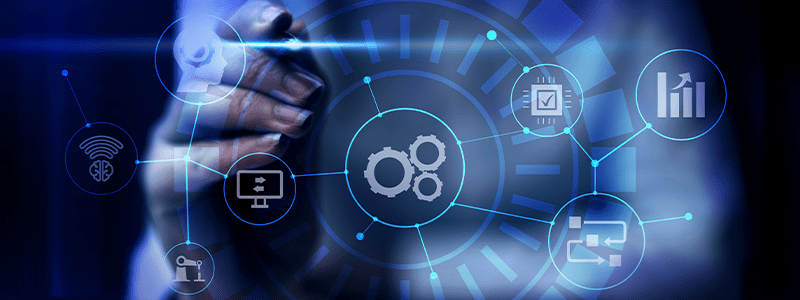What is Legacy Modernization?
Today’s modern enterprises are dependent on technology for running their day-to-day operations. While small enterprises may be using a few computers and simple office apps, other large enterprises utilize entire server farms and extensive CRM apps for managing their business. Although the extent of technology usage may vary, it is obvious that their productivity and progress depend on the efficiency of their technology infrastructure. And since the technology world is always evolving, enterprises are faced with the dilemma of whether to keep using their old technology and save costs or to invest in modernizing their legacy systems in order to keep up with the modern world. This latter choice i.e. of modernizing the legacy technology systems is called Legacy Modernization.
We will see in this blog why it is the most important step for making an enterprise work at its optimum level and to stay competitive. But first, let’s discuss the drawbacks of not modernizing your legacy systems.
Drawbacks of using legacy systems
Sometimes enterprises may be reluctant in updating their tech infrastructure, either due to budgetary constraints or due to plain unawareness. This negligence can prove to be disastrous in the long run. For example, a failure to update your security software can leave your network exposed to malware attacks and hackers. An enterprise may also risk losing data if no means of timely backups and recovery is in place.
Besides security, there is also the matter of productivity. The productivity of your enterprise is dependent on its underlying tech infrastructure. So if the infrastructure itself is hampering the workflow, then no matter how hard your employees work their productivity will be limited because of the inefficient tools that they are using.
Why does legacy modernization matter?
Now, let’s look into some of the major benefits of modernizing your legacy infrastructure –
1. Legacy Modernization saves costs.
As systems become old, the efforts and money required to maintain them increase too. Finding experts who can help you in maintaining your legacy code and applications will be arduous and costly. Also, any new customization in your app can take days or months to integrate because the app may be out of sync with the current standards. Such delays can adversely impact the operational costs of infrastructure. This effort and money can be better spent in acquiring new technologies and training your existing staff on those new technologies. In the long run, investing in the acquisition of new technologies always pays off better when compared to spending on maintaining legacy infrastructure.
2. Legacy modernization improves security.
Over the last decade, there has been an 87% increase in malware infections. These infections happen because hackers exploit the weaknesses of the network of an enterprise. Some ransomware can even cost millions of dollars of loss to enterprises. To avoid these attacks and losses, enterprises must keep updating not just their applications but also the platforms they are run on. The recent trend of remote work has exacerbated the need to modernize your infrastructure.
Besides the network, the data needs to be protected too. The modern cloud solutions keep the copies of your data at different data centers to avoid having a single point of failure. The data never gets lost or corrupted because it’s distributed and is backed up at multiple locations.
3. Legacy modernization boosts performance.
Your enterprise can experience an instant boost in its performance with the help of apps that speed up your workflow. For example, a task that takes hours of computation in linear processing can be accomplished in minutes in parallel processing. Modern data crunching and analysis apps are built with this principle.
Similarly, batch execution in modern finance apps ensures that transactions are done at one go, rather than handling them individually. Other examples include cloud networks that can make available the same resource to many different users at the same time such as a company ledger. Besides processing, modern apps are also intuitively designed such that the most usable functionalities are easier to access. These myriad tweaks and upgrades can add up to provide a huge boost to your enterprise’s overall performance.
4. Legacy modernization increases revenue.
Modernization can increase your company’s revenue by leaps and bounds. Empowering your employees with the latest technology can help them work more productively which in turn will translate into increased business. This is from an inside perspective. But from an outside perspective, this increase in efficiency can also bring in more customers. For instance, a UI upgrade in your customer-facing applications can also increase your revenue by making it easier for your customers to interact with your business.
What next?
There is no doubt that Legacy Modernization is crucial for an enterprise’s progress in this new digital age. But before commencing on your modernization journey you must assess the present state of your tech solutions and find out those changes that can be easily implemented with minimal disruption to the existing infrastructure. Hardware modernization is still relatively easy but for software modernization, you need a systematic approach. Sometimes it’s worth incorporating a whole new system by replacing the old one. At other times gradual upgrades should be introduced in the system.
In conclusion, legacy modernization is a crucial activity that should be a part of your business strategy. To ensure the continued success of your enterprise you should adopt legacy modernization to upgrade your enterprise infrastructure as per modern standards.

